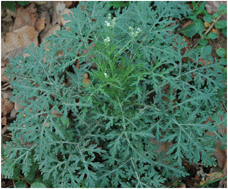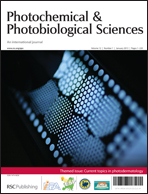Allergic contact dermatitis (ACD) to Parthenium hysterophorus is the most common cause of plant dermatitis in India. Parthenium dermatitis is caused by dry powder of leaves and flowers and hair-like structures (trichomes). Sesquiterpene lactones (SQLs) are the most important allergens responsible for ACD to parthenium. The different patterns include classical airborne contact dermatitis, chronic actinic dermatitis (CAD), exfoliative and widespread dermatitis. There is a definite trend towards a change from an airborne pattern to a CAD pattern in the natural history of parthenium dermatitis. In CAD, there is a reported increased sensitivity to UVB, UVA and even visible light. However, SQLs including parthenin, the major allergen in the Parthenium hysterophorus, has neither documented photoallergic nor phototoxic properties. Recently, the high photoreactivity of α-methylene-γ-butyrolactone ring toward thymidine and resulting photoadducts has been proposed as an explanation of the progressive evolution of allergic contact dermatitis toward chronic actinic dermatitis. However, more data is required to reach a conclusion on the mechanism of photosensitivity in parthenium dermatitis. Sunlight, especially UV radiation, may have a role in increasing the germination capacity and the amount of allergens in the Compositae family, especially in parthenium plants under appropriate conditions like summer and spring, which may contribute to high prevalence of parthenium dermatitis especially in northern India.

You have access to this article
 Please wait while we load your content...
Something went wrong. Try again?
Please wait while we load your content...
Something went wrong. Try again?


 Please wait while we load your content...
Please wait while we load your content...